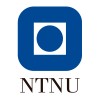
Thyrotropin Over-suppression and Heart
Malignant Neoplasm of ThyroidHeart Diseases1 moreThe investigators evaluated the cardiac effects of Thyroid-stimulating hormone (TSH) over-suppression in women with differentiated thyroid cancer (DTC) frequently encountered during suppression therapy.

Sleep-disordered Breathing in Eisenmenger Syndrome
Eisenmenger SyndromeCongenital Heart Disease1 moreSleep-disordered breathing (SDB) is a wellknown comorbidity in cardiovascular disease. Knowledge about SDB in adult congenital heart disease is limited.

Effect of Rosuvastatin Therapy on HDL2 Level
HyperlipemiaCoronary Heart DiseaseIn many large trials, reducing low density lipoprotein (LDL) levels with rosuvastatin decreased the incidence of major cardiovascular events,but little attention to the effects of rosuvastatin on HDL level,especially on HDL subtype. Epidemiological evidence strongly favors the notion that the risk of cardiovascular disease (CVD) is inversely related to the plasma high-density lipoprotein (HDL) cholesterol concentration. HDL can be subdivided into large-sized (HDL2a, HDL2b) and small-sized subclasses (preb1-HDL, HDL3c, HDL3b, HDL3a) and preb2-HDL. Some studies indicate that only large HDL2a and HDL2b particles make HDLs possess anti-atherogenic functions. The investigators assume that rosuvastatin could play the role of anti-atherosclerosis though the levels of HDL2a、HDL2b increased.

Influence of Inhaled Anaesthetics on Rebreathing of Carbon Dioxide When Using an Anaesthesia Gas...
Ischemic Heart DiseaseThe purpose is to investigate how the adsorptive capacity of the active carbon filter to carbon dioxide in an anaesthetic gas reflector (AnaConDa) is affected by adding inhaled anaesthetic agent. The hypothesis is that addition of inhaled anaesthetic agent will affect the amount of adsorption of carbon dioxide to the active carbon and thereby affect rebreathing of carbon dioxide.

EXCEL-II Stent Vesus EXCEL Stent to Treat the Patients With de Novo Coronary Artery Lesions.
Coronary Artery DiseaseMyocardial Ischemia6 moreThe purpose of this Randomized Study to evaluate the safety and efficacy of the Excel-II DES compared to the EXCEL DES in the treatment of patients with de novo coronary artery lesions.

The Precision of Pulmonary Artery Cardiac Output-measurements in Spontaneously Breathing Patients...
Heart DiseasesThe intention of this study is to determine whether the precision of the measure of cardiac output can be optimized by conducting the measurement while the participant is instructed to exhale slowly. This will be compared to measurements done at random to respiration and timed with the participant's spontaneous expiration.

Web-based Psychological Intervention to Coronary Artery Heart Disease Patients
Coronary Artery DiseaseThe purpose of this study is to evaluate medical cost-effectiveness, reduce the psychological risk factors( including hostility, anxiety, depression, and perceived stress) in coronary artery disease (CAD) patients and enhance the regulation of the autonomic nervous system (including respiration rate, heart rate, distal blood vessel pulse, and finger temperament) through web-based cognitive -behavioral group therapy.

XIENCE PRIME SV Everolimus Eluting Coronary Stent Japan Post Marketing Surveillance (XIENCE PRIME...
Ischemic Heart DiseaseAngina Pectoris3 moreThe objective of the study is to evaluate the safety and efficacy of XIENCE PRIME SV in real world practice in Japanese hospitals.

Prediction of Bleeding and Transfusion Outcomes and Assessment of Perioperative Platelet Reactivity...
Heart DiseaseExcessive bleeding after cardiopulmonary bypass (CPB) operations remains to be a persistent problem. Antiplatelet therapy (APT) is an integral component of perioperative management in patients undergoing cardiac surgery. The impact of drug induced platelet inhibition on early postoperative bleeding extent and transfusion requirements remains difficult to predict. In addition to, resistance to antiplatelet drugs as well as perioperative increase in platelet reactivity following CPB has been reported but this phenomenon has to be comprehensively investigated. The best point-of-care platelet function test to predict bleeding complications/transfusion requirements remains unclear. In addition to, the best test platelet function test to monitor resistance to antiplatelet therapy and its impact on clinical outcomes remains elusive. The aim of this study is: to compare two point-of-care platelet function analyzers (Multiplate and ROTEM Platelet) in regard to prediction of bleeding complications/trasfusion requirements. to compare two point-of-care platelet function analyzers (Multiplate and ROTEM Platelet) in regard to detection of high "on-treatment" platelet reactivity both pre- and postoperatively.

The Comparative Study of OCT,Gemstone CT and 320-detector Row Spiral CT for Evaluating Restenosis...
Coronary Heart DiseaseIn-stent restenosis is a major reason of coronary heart disease recurrence .Even in drug eluting stent(DES), Restenosis rate could be up to 10% in diabetes and complex lesions though it was about 3-5% in general. It is particularly important that in-stent restenosis after implantation was early diagnosed and detected. The evaluation of OCT imaging is more accurate for narrow area calculation, more clear for narrow organization structure and more specific for detecting tissue types.It is currently the best way for restenosis histologic diagnosis.But it has many weakness such as the higher cost,an invasive test, expensive instrument, relatively complicated to operate,and etc.In this study, OCT image was regard as the "gold standard" of stent restenosis. The improvement of spatial resolution of Gemstone CT can effectively improve the imaging quality and the measurement's accuracy of coronary artery stents.The diagnostic value of in-stent restenosis of Gemstone CT is higher than of the 320-detector row spiral CT. To a certain extent, the gemstone CT can replace OCT for examining the in-stent restenosis. This study will examine the degree of in-stent restenosis by the gemstone CT and the 320-detector row spiral CT and compare the two ways on the basis of the result of OCT.
